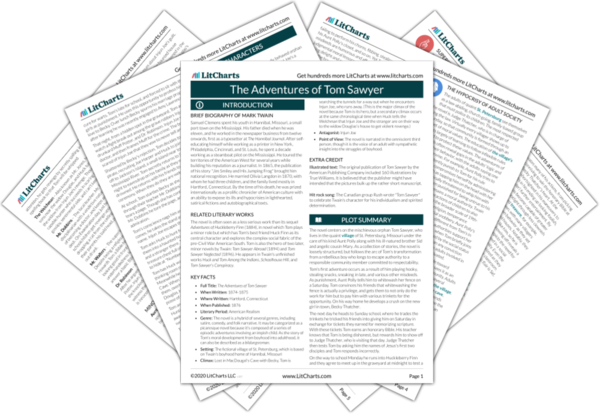In writing about the village of St. Petersburg, Missouri, Twain was describing a contemporary Southern American village to his original readers. Rather than glamorizing his subject matter by writing about a more well-known location or glamorous characters, he aimed towards realism in describing the daily lives of average people living on the Mississippi River, people in whom his readers might recognize themselves. His preface explains that much of the book is based on his own experiences growing up, implying that little has been reinvented. Yet, even as he sets out to tell the stories of ordinary villagers with beliefs and values that represent those of many mid-nineteenth-century Americans, Twain adds embellishments to his depiction, playing up the quaintness of village life. A more realistic view of a community would stress, for example, unresolved injustices, the disparity between rich and poor, or the life of a slave in St. Petersburg (as Twain will do in another novel, Adventures of Huckleberry Finn). And there are elements of realism in The Adventures of Tom Sawyer, for example Twain's descriptions of Huck's life as a homeless boy who is looked down upon by his elders. Even so, as a novel consisting of many short stories with happy endings, The Adventures of Tom Sawyer is largely a sentimental portrait of Mississippi village life, offering St. Petersburg as Twain would like to remember it. Twain does this purposefully to show the reader how building a community involves a sense of optimism. Twain structures the end of the book like a romantic tale, with Tom and Huck actually discovering treasure in a haunted house—a completely improbable plot twist. He implicates the reader in enjoying fanciful stories more than realistic ones.
Sentimentality and Realism ThemeTracker












